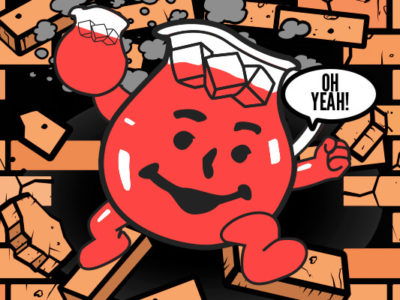Upon attending a large university rife with school spirit built by the foundations of the football program, I never found myself especially immersed in the idea of “bleeding” my school’s colors. High school instilled a hate for organized chants, matching outfits and student sections that forced you to stand for hours (laziness at its finest). Within each educational structure, pride ignites connectivity, the feeling of belonging and good deeds, but it also promotes conformity, routine and even furthers the distance between outsiders. So I thought to myself, why start chugging the Kool-Aid now?
The implications and pressures of school spirit greatly increase with the acceptance to college. Fellow students, professors and alumni expect you to immediately incorporate the college’s colors into every aspect of your wardrobe, memorize the alma mater and chant obnoxious phrases at any given moment. Individuals fail to recognize that choosing a school involves a number of factors other than the desire factor; money, in-state versus out-of-state, familial pressures and majors offered also play vital roles in the decision process. Just because your blood doesn’t run with your school colors doesn’t mean you don’t belong at whatever college or university you chose; outstanding school spirit just isn’t for everyone, and that should be okay.
Students shouldn’t face scrutiny if they don’t feel like waking up to a beer bong in their face or watching the sunrise six dreaded hours before kickoff. And what’s with the students who literally sleep, eat and breathe their school colors calling others “soft” in relation to their lacking desire to party and cheer? Those students’ inability to accept the different levels of excitement geared towards school-related events push the “outsiders” further from their oh-so-welcoming arms and closer to accepting a weekend away from campus.
This article doesn’t aim to bash school spirit. Pride definitely spreads positivity and makes students feel like they belong, but students need to see every side of their college and all that it has to offer. With a certain dedication to your school’s colors come weekends dedicated to tailgating alongside females in kid-sized cheerleading outfits and males dawning current and past jerseys while parents shove every kind of food into your mouth. Amongst continuous weekends of playing Kan Jam and drinking games, students miss out on optimal weather to go hiking, explore downtown or experience a local band.
Discovering new traditions, pastimes and places usually follows with interactions between individuals from different walks of life and the motivation to not conform to the stereotypical college lifestyle of tailgating excessive school pride. While activities supporting your school can be fun and rewarding, exploring off campus also creates worthwhile experiences and much-needed breaks from college activities. Universities are known for more than providing opportunities to socialize and explore the staple of sporting events and classes. It’s just a shame that school spirit overshadows theses opportunities to discover other facets of college.
This seemingly tasty jub of Kool-Aid also obstructs empathetic thoughts when a school comes into question with corrupt practices. Although the JoePa controversy hits extremely close to home, it provides ample evidence for why school spirit should not always be held in such a high regard. The JoePa controversy fell into the devastating events following the Sandusky Scandal at Penn State University in 2011; JoePa, the once extremely successful football head coach at PSU, found himself under scrutiny when he allegedly knew about Sandusky’s disgusting acts of molestation. Recently, Penn State honored JoePa in a home football game against the Temple Owls. Without a strong sense of connection to the blue and white of PSU, I found myself in fragile territory amongst the minority of those who opposed honoring Joe Pa—a successful coach, but an accomplice to malicious acts of child molestation.
Essentially, Joe Pa’s honoring only warrants opinion on both sides because the university will do what the university finds fitting. Instead of leaning towards the side of obnoxious school spirit and disregarding my own morals, I found my views were more objective than someone who screams, “We Are…” and represents Joe Pa’s historic 409 wins on a daily basis. Aside from just Penn State’s school spirit, universities, like Pitt, capitalized on Penn State’s misplaced spirit to expand upon their own with insensitive “Joe Knew” paraphernalia. Drinking the Kool-Aid create a personal connection to others who do the same, but it can also create a jaded bubble of insensitivity and cult-ish behavior; which furthers the argument of how spirited behavior alienates those less inclined to immerse themselves in the rah-rah of college game days. Some things are bigger than sports, allegiances and school spirit.
Although many points arise for why sipping on the school colors fails to make an impression on certain students, the main idea falls in the way of accepting difference and finding new outlets for discovery and opportunity away from the conformity. Certainly individuals may feel at a loss when attending a large state school rampant with students clad in their colors, but the great aspects of large schools come with the number of different outlets to follow with good friends and acceptance. Acceptance of what? Acceptance of following the path less traveled by with individuals who are weird and different just like you. Some of us are just a little too mad to trust what Kool-Aid college is thrusting at us.



















